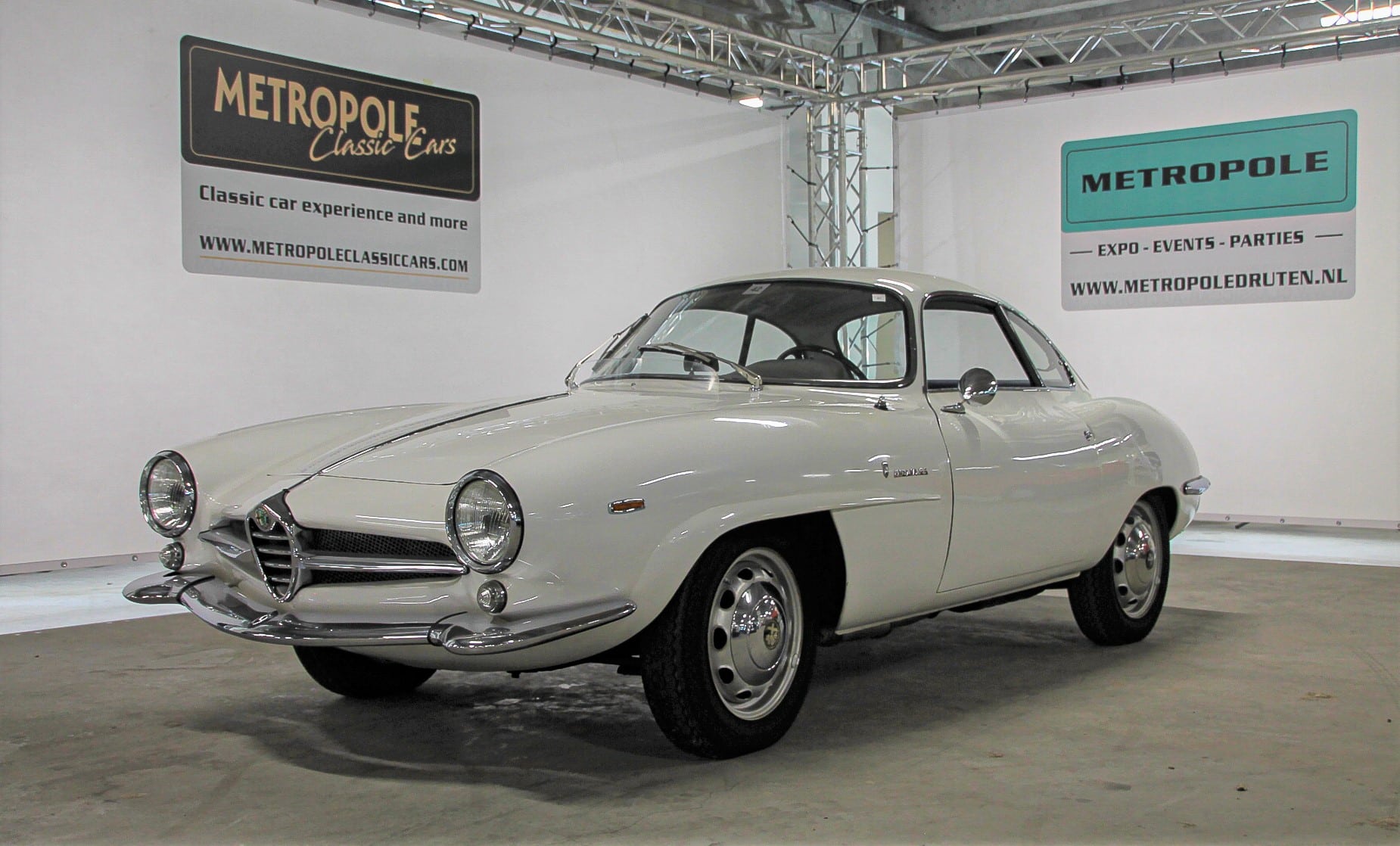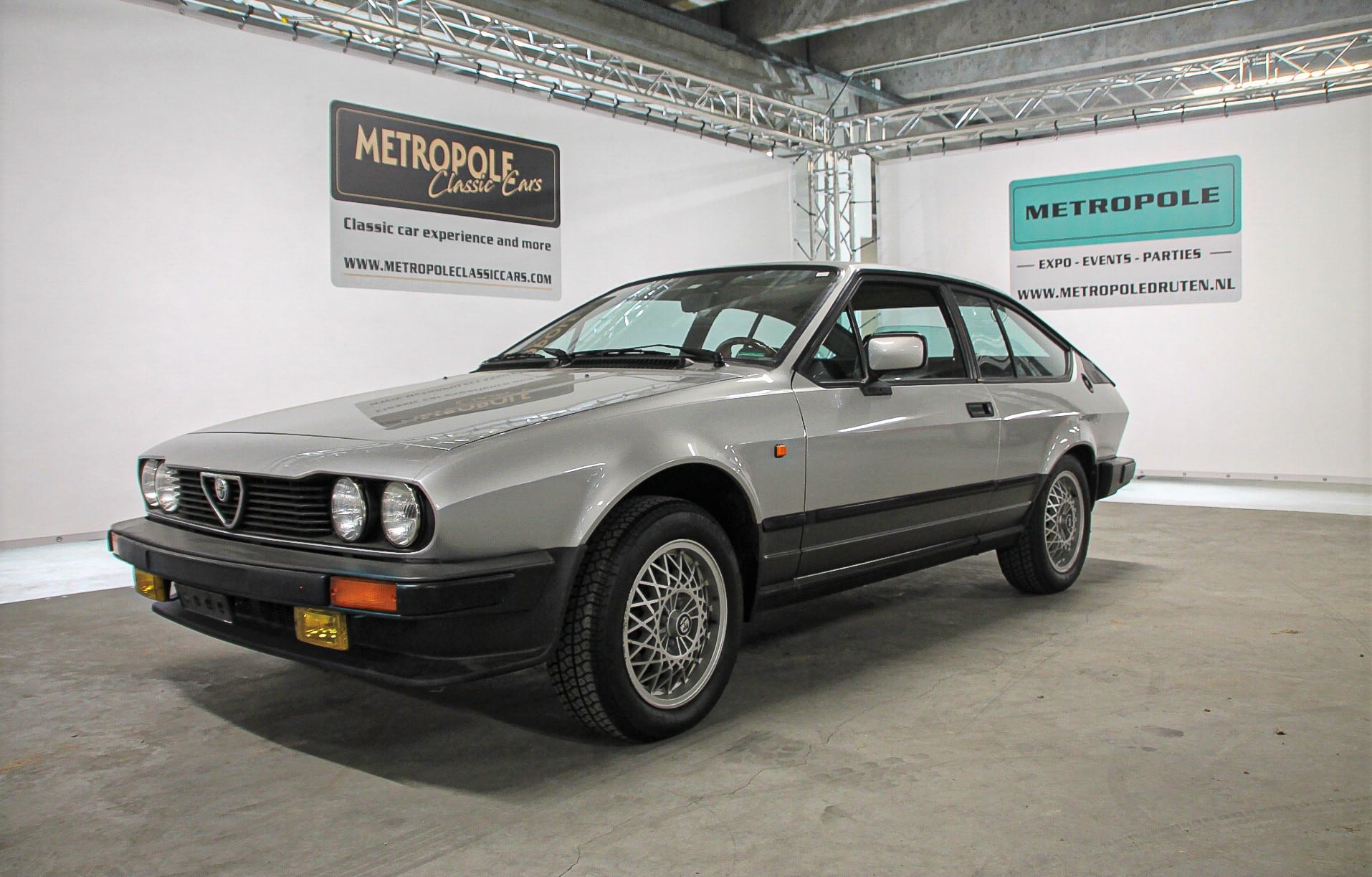Description
The first prototype of the Giulietta SS was presented at the Turin Motor Show in 1957. After two more prototypes were presented at car shows, the official presentation of the production version to the press was on June 24, 1959 at the Monza circuit. The first 101 cars produced had a “low nose” and 750 SS designation. A minimum of 100 cars were required to homologate a car into FIA regulations. Although some all-aluminium cars were produced, most of these cars had a steel body with aluminum doors, hood and trunk lid. The first cars were also equipped with Weber 40 DCO3 carburettors, later changed to 40 DCOE2. The Sprint Speciale's drag coefficient is 0,28, equal to that of a Chevrolet Corvette (C6), and has not been bettered in more than twenty years. Cars used the 1.290 cc Alfa Romeo Twin Cam engine, a design with hemispherical combustion chambers and valves controlled directly by two overhead camshafts.
Type 101.20
Dashboard of a 1961 Giulietta Sprint Speciale.
Minor changes to a production version included steel doors, Weber 40 DCOE2 carburettors, higher front nose, removal of plexiglass windows. Bumpers were mounted at the front and rear, and the cars also had minimal sound insulation. With the 1290 cc engine and 100 hp (75 kW) power, the maximum speed was approximately 200 km/h (124 mph). The 1.3 liter engine and gearbox were the same as those in the racing-oriented Giulietta Sprint Zagato. All Giuliettas SS had three-shoe drum brakes on the front wheels and drum brakes on the rear. Export versions had the designation 101.17. The side badges had the “Giulietta Sprint Speciale” script.
Type 101.21
Alfa Romeo Giulia Sprint Speciale, rear view.
The larger 1.6 L engined Giulia range replaced the Giulietta and was introduced at the Geneva Motor Show in March 1963. As Giulietta is the diminutive for Giulia in Italian, the new name Giulia was a play on words indicating that the new car was a adult version of the Giulietta. Despite a Giulia SS prototype, Alfa Romeo decided to keep the Giulietta-shaped SS in production. The 1.570 cc engine allowed up to 200 km/h (120 mph). The 1.570 cc engine with Weber 40 DCOE2 carburettors came from Giulia Sprint Veloce and delivered 112 hp (84 kW) of power. Most Giulia SS had disc brakes on the front wheels. An easy way to distinguish the Giulia SS from the Giulietta SS is by the dashboard. The Giulia has a leather bottom with the glovebox at a different angle than the main panel. The Giulietta's dashboard is sloping and painted in one color without a leather underside. The side badges featured “Giulia SS” scripts. Production ended in 1965, with a final single Sprint Speciale completed in 1966.
This Giulia Sprint Speciale was delivered new in Germany in 1965 and was delivered to Mr. Elliot in the United States in 1969. The Giulia SS came to the Netherlands in 1991. This is an older restoration. The car was restored "body off" in the past and subsequently very well maintained. The Alfa Romeo is therefore still in very good original condition. The body is free of rust with correct fits and beautiful sheet metal. The dark blue leather interior is in good original condition with beautiful patina. The technology has certainly not been forgotten. The car has always been well maintained using original parts. The 1.570cc four-cylinder engine is therefore very healthy. Thanks to the double Weber carburettors, the engine produces approximately 112 hp. The five-speed transmission shifts smoothly and without backlash. The gearbox and differential have already been completely overhauled. The Giulia Sprint Speciale was equipped with disc brakes from 1961, as was this car. Furthermore, the Giulia has matching numbers and there is extensive documentation describing the restoration, maintenance and even correspondence with the first American owner. In short, a beautiful original Alfa Romeo Giulia Sprint Speciale in very good condition.
The Alfa Romeo Giulia Sprint Speciale, also known as the Alfa Romeo Giulia SS, is a special and sporty car that was produced between 1963 and 1966. It is a variant of the Alfa Romeo Giulia, but with a special design and improved performance.
Here are some features and details of the Alfa Romeo Giulia Sprint Speciale:
- Design: The Giulia Sprint Speciale was designed by the Italian design house Bertone, led by designer Franco Scaglione. It had a striking and streamlined body shape, with sharp lines, a low roofline and a sloping rear end. It was considered a precursor to the later “wedge” design.
- Body: The body of the Giulia Sprint Speciale was made of steel and aluminum. It was a two-door coupe with a sleek and aerodynamic appearance. The car's distinctive styling not only provided a striking appearance, but also improved aerodynamics for better performance.
- Engine: The Giulia Sprint Speciale was equipped with a 1.6-liter four-cylinder engine. This engine came from the Alfa Romeo Giulia TI sedan and produced approximately 112 hp. Power was sent to the rear wheels via a manual transmission.
- Performance: Thanks to its light weight, streamlined body and powerful engine, the Giulia Sprint Speciale offered impressive performance for its time. It could reach a high top speed and had good acceleration and handling characteristics.
- Heritage and rarity: The Giulia Sprint Speciale is considered one of the most coveted classic Alfa Romeo models. It was a rare car, with limited production numbers. Due to its unique design, sporty performance and exclusivity, it is a sought-after car among collectors and classic car enthusiasts.
















